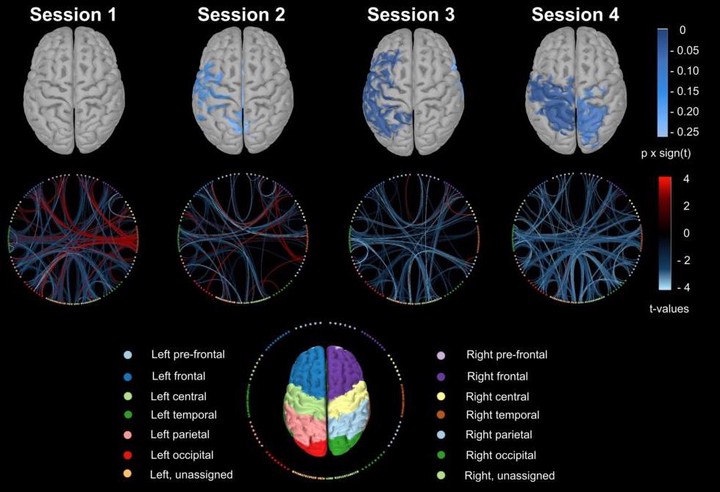Functional disconnection of associative cortical areas predicts performance during BCI training

Abstract
Brain-computer interfaces (BCIs) have been largely developed to allow communication, control, and neurofeedback in human beings. Despite their great potential, BCIs perform inconsistently across individuals and the neural processes that enable humans to achieve good control remain poorly understood. To address this question, we performed simultaneous high-density electroencephalographic (EEG) and magnetoencephalographic (MEG) recordings in a motor imagery-based BCI training involving a group of healthy subjects. After reconstructing the signals at the cortical level, we showed that the reinforcement of motor-related activity during the BCI skill acquisition is paralleled by a progressive disconnection of associative areas which were not directly targeted during the experiments. Notably, these network connectivity changes reflected growing automaticity associated with BCI performance and predicted future learning rate. Altogether, our findings provide new insights into the large-scale cortical organizational mechanisms underlying BCI learning, which have implications for the improvement of this technology in a broad range of real-life applications.